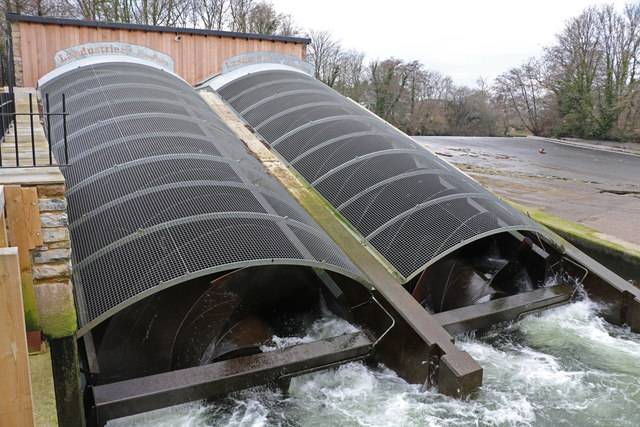Tidal Power

With Eskom's problems so much in the news lately South Africans have rightly become very concerned about electricity supply and also the cost escalation of power. It is this and the ongoing problem of polution from coalfired power stations that has led me to put some thought into alternative and environmentally safe power solutions. Perhaps the most promising would be to use tidal power along our coastlines to produce "clean" electricity.
I am not an engineer but I do have a practical mind and have sufficient knowledge to understand what should be possible. Firstly as everyone knows the tides along the coast change several times per day with a minimum difference in level of about 1.5 meters. This change in water level can be used to drive hydro-electric turbines and thus supply power. With the system I have in mind it should be possible to provide a constant supply of power throughout the day and night. It should also not require much maintainance and no fuel, which should make it economically viable.
To start with we would need 2 reservoirs connected to an estuary. either an existing estuary or an artificial estuary. On each reservoir there would be a water driven turbine which will convert tidal flow into power. One reservoir would be used for operating a turbine during a rising tide and the other during a falling tide. Each reservoir would also have a sluice gate connected to the estuary, as well as a sluice gate between the 2 reservoirs. There would also need to be sluicegates blocking off the turbine inlets. For convenience sake I will label the reservoirs R for rising tide reservoir and F for falling tide reservoir.
Let us imagine that during a rising tide the reservoir R is at low tide level with all sluice gates closed. As the tide rises the turbine inlet of R is opened and water then enters R via the turbine, which is then driven by the water pressure and thus produces power. At high tide there will still be sufficient flow to drive the turbine due to the different water level in the estuary and the reservoir. At this time the sluicegate on reservoir F is open to allow the reservoir level to rise to the same as in the estuary, this sluicegate will be closed when the level is equal to the high tide level in the estuary.
As the tide falls the level in reservoir R and the estuary will become equal. Before this happens the turbine sluicegate in reservoir F will be opened and the water from the reservoir will flow back into the estuary via the turbine, which then produces power. The turbine sluicegate in R will at this time be shut. The water level in R will be below high tide level but considerably above low tide level.
During the falling tide cycle the level in F reservoir will drop below the level in the R reservoir, ar this time the sluice between R and F is opened which will supply more water to the F reservoir and so allow it to sustain an outflow through the turbine for longer. Before low tide the sluice between F and R is closed and the sluice between the estuary and R is opened to allow R to drop to low tide levels. At low tide the R sluice to estuary is closed and as the tide rises the cycle begins again. During this rising tide cycle, the level in R will rise above the level of F at which time the sluice between the 2 is again opened to allow more space into reservoir R, in so doing allow the turbine to remain active for longer. This cycle is repeated as the the tide rises and falls and should then provide a constant supply of electricity.
This system may also provide additional benefits such as shellfish cultivation, but that would be something that can be investigated once the system is operational. To my mind such a system should work well and operational costs would be limited to the operation and maintainence of sluicegates and turbines.
